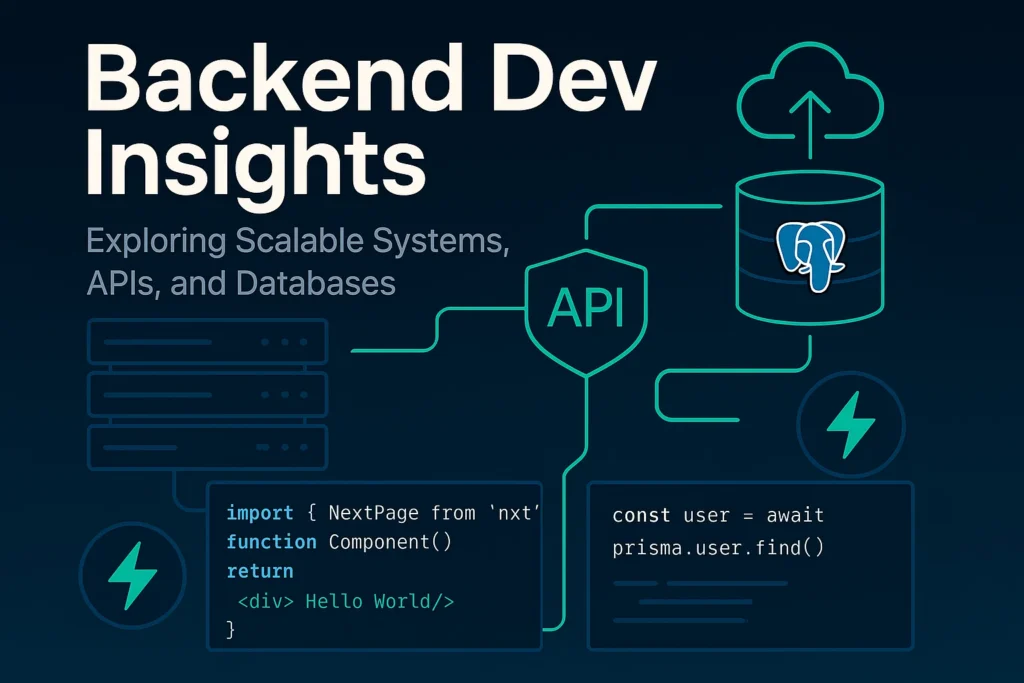Backend Development in 2025

Understanding Backend Development: The Power Behind Modern Web Apps
What is Backend Development?
Backend development (also called server-side development) is the work that happens on a web server behind the scenes. It includes the databases, server applications, and logic that power a website or app.
In other words, it’s the part of a project you don’t see – but it’s responsible for storing and organizing data and making sure everything on the front end actually works. Backend developers write code that responds to requests from your browser, retrieves or updates information in a database, and sends the right data back to the user.
Why is Backend Development Essential?
Modern websites and apps rely on their backend systems to run smoothly. Server-side programming lets a site deliver dynamic, personalized content instead of showing the same static page to everyone.
For example, e-commerce sites use backend logic to show product recommendations based on browsing history, and banks use it to securely retrieve account information for authorized users. Without a solid backend, features like user logins, customer profiles, and secure checkouts simply wouldn’t work.
Learn more about server-side development on MDN Web Docs.
Common Backend Technologies
Here are some popular tools used in backend development:
- JavaScript (Node.js) – An open-source, cross-platform JavaScript runtime for server-side code. Official Node.js site
- Python (Django/Flask) – Python frameworks that provide built-in libraries for backend functionality. Django website
- Ruby on Rails – A mature framework for Ruby that helps build full-featured apps quickly. Rails website
- PHP (Laravel) – A widely-used scripting language with Laravel providing modern backend features. Laravel framework
- Databases – Tools like PostgreSQL, MySQL, and MongoDB manage and store app data. PostgreSQL, MongoDB
Examples of Backend Tasks
Backend developers work on a wide variety of tasks, including:
- Building APIs to serve and receive data
- Connecting and querying databases
- Validating form inputs and handling errors
- Managing user authentication and secure sessions
- Processing business logic, such as pricing or order fulfillment
- Integrating third-party services (e.g., payment processors, email providers)
Modern Backend Trends: Microservices & Spring Boot
As web applications grow in complexity, developers are moving away from monolithic architectures and embracing microservices. This approach breaks an application into smaller, independent services that can be developed, deployed, and scaled separately. Each service handles a specific business function and communicates with others through lightweight APIs.
One popular framework for building robust microservices is Spring Boot. Built on the Spring ecosystem, Spring Boot makes it easy to create production-ready applications with minimal configuration. It supports RESTful APIs, database integration, security, and much more—all in a highly modular structure.
Embracing modern backend technologies like microservices and Spring Boot can result in more scalable, maintainable, and resilient applications. As your app grows, these patterns help ensure that your backend remains fast and efficient.